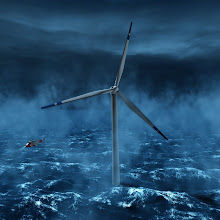
One of the Earth's main components is magma, and is often seen in its surface form of lava when launched out of a volcano. Magma, unsurprisingly, is extremely hot, and therefore, energetic. Given the dominance of magma in the Earth, its geothermal energy promises to be vast and plentiful. This bounty, however, is difficult to access, and can, currently, be only harvested in mass quantities through geothermal systems, which are places where the Earth's heat flow is shallow enough to pump the water required for energy transfer to the surface. Despite these limitations, geothermal energy remains viable as a major competitor. In fact, volcanoes and hot springs in the United States could potentially provide twenty-five percent of America's needed power. Additionally, up to eighty percent of America's geothermal systems may remain undiscovered, largely because of a supposed lack of defining surface features. If this estimate is true, then geothermal energy could easily power the entire United States and America would still retain an energy excess. The power of geothermal energy, though, is most strongly demonstrated in Iceland. Iceland may have a population of only three hundred and ten thousand people, but the country's twenty active volcanoes provide a pool of geothermal energy. Iceland has only harvested one percent of its geothermal potential, and the country already uses that small chunk of energy to heat eighty-five percent of the country's homes and generate eighteen percent of the country's electricity. Now, if Iceland harvested all of its geothermal potential, then the country's power consumption would be almost insignificant compared to its energy production.
This power source may be unlimited, but geothermal energy still has one drawback - waste production. Some geothermal plants emit carbon dioxide, a well-known greenhouse gas that contributes to global warming, although the newest geothermal plants, called binary plants, emit virtually no carbon dioxide at all. Some geothermal plants also produce a solid-like sludge byproduct, and while a portion of the sludge can be sold, most of the waste is disposed of at specific sites. Despite this disadvantage, though, the environmental impacts geothermal energy creates are much lower than those of fossil fuels, all with low prices for geothermal energy. In fact, geothermal energy costs only three to three and a half cents per kilowatt-hour, while energy derived from an average power plant dependent on fossil fuels costs five cents per kilowatt-hour, which gives an incentive to transition to this renewable energy source.
Overall, geothermal energy has great promise, not only because of the vast potential energy for harvesting, but also because of the costs of producing this energy and the environmentally friendly technology available. Even with the relatively advanced technology required to produce geothermal energy, the cost of that energy is lower than that of fossil fuels. Additionally, geothermal energy could avoid contributing to global warming if all geothermal power plants advanced to the latest technology, thereby avoiding any of the unforeseen consequences that could potentially follow. If the world does transition to renewable energy, then I think that geothermal energy will provide a significant portion of the world's power consumption. That consumption may increase in the upcoming years, but with the surplus of energy at the world's disposal, humanity should have no problems in that area.


2 comments:
Thomas,
I like how you bring up the different renewable resources each time that I visit your blog. The concept of geothermal energy isn't fairly a new concept if I'm correct (saying that it would be new if it was discovered in the last decade). But they still haven't found a highly productive way to produce energy yet. How long do you think it will take to refine a technology of energy like this? In the time that it takes to refine this will it be obsolete by succumbing to power sources at are more "green" than it?
Thanks,
Rob
IGetNoSleep,
Indeed, geothermal energy is not a new concept. In fact, if you follow the last link, then click on History on the left side of the page, you will find that the first geothermal power plant was constructed in 1904. On the refinement of geothermal technology, though, some geothermal power plants still produce carbon dioxide and solid waste, and the world must certainly refine geothermal technology to neutralize this drawback. I do not know how long this refinement process will take, but geothermal energy will probably not be eclipsed by other renewable energy sources, like solar or wind power, as those sources have drawbacks of their own. I will likely talk about these sources later, but I believe that most renewable energy sources have at least some viability for the immediate future.
On a side note, don't forget to vote on the current poll and the new polls coming on Thursday, October 16!
Tommy
Post a Comment